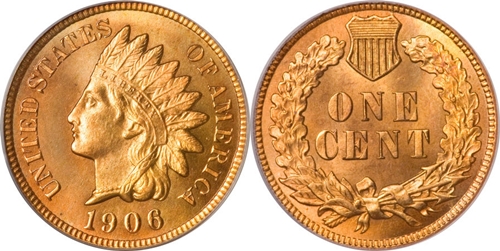I think I would occasionally find these in my change as a kid in the late 50s. Sure wish I had kept all the Morgan silver dollars my grandparents gave me as gifts.

Posted on 01/15/2017 5:52:24 PM PST by nickcarraway
Lady Liberty will be depicted as a black women on a coin -- the first time in the nation’s history Lady Liberty has not been a white woman -- the U.S. Treasury Department announced on Thursday.
The coin, worth about $100 face value, is part of a commemorative series to honor the 225th anniversary of the U.S. Mint.
“The 2017 American Liberty 225th Anniversary Gold Coin is the first in a series of 24-karat gold coins that will feature designs which depict an allegorical Liberty in a variety of contemporary forms-including designs representing Asian-Americans, Hispanic-Americans, and Indian-Americans among others-to reflect the cultural and ethnic diversity of the United States,” the U.S. Treasury Department said in a statement.
The coin is part of a year-long celebration by the U.S. Treasury to celebrate the mint, and the theme will be “Remembering our Past, Embracing the Future.”
Several women have been featured on U.S. coins in the past. Susan B. Anthony was featured on the U.S. silver dollar from 1976 until 1981, and Helen Keller is on the Alabama state quarter. Sacagawea is featured on the $1 gold coins.
The new Lady Liberty coins will be available for sale in April.
Whether Americans—white or black—like it or not, Lady Liberty is patterned after a Frenchwoman!!
No reason to change now, just to make a political point!
The mint left off “About”.
Sorry. Call me when Africans go numerate.
http://www.sbcgold.com/buy-gold-and-silver/vienna-philharmonic-gold-coins/
Few people will ever see this expensive commemorative coin.
Why do they use the year 1792?
It’s a coin.
I always thought lady liberty looked like a man. Maybe I’m just thinking of the statue of liberty. I’m fine with a black lady liberty.
Good looking, clean cut coin. Very nice design. Wonder who the model was?
Answering my own question ...
1792 was the year the US Mint was established.
the black plague has descended on America
commemorative coins are historically given a lot of leeway from “standard” coins, as to what they depict
as long as commemorative coins do not try to alter directly, the depiction of something that was, or is, like the statue of liberty (which the proposed coins do not seem to do) I see no problem
I bought an Obama .999 silver round and slipped into a relatives’ collection. Hilarity ensued!
Will be known as the Cornrow dollar.
I can’t remember who, but one celebrity ordered many of them thinking they were an actual coin of value, not a 50 cent piece.
http://thepeoplescube.com/peoples-blog/a-symbol-of-change-obama-painted-us-coins-scam-t2960.html
I think I would occasionally find these in my change as a kid in the late 50s. Sure wish I had kept all the Morgan silver dollars my grandparents gave me as gifts.

I’ll check and see how many gold coins I can buy after the SS COLA thus month.
Another last-minute in-your-face parting shot by Obozo to enhance his legacy among the faithful.
Leni
Well, it’s just fantasy. When in human history has there ever been an african people living in a free republic?
The 1790 U.S. census consisted of 3,140,207 free white people, 59,150 other free people and 694,280 slaves of any color.
Assuming that the term “liberty” would not include any of those slaves and none of those millions of white people, it only leaves the 59 thousand other free people. Only about half of them were females, so we are down to 30 thousand. That number includes all races other than white, not just blacks, and it also includes children, none of which could be considered a “lady”.
So, by my estimate, the woman on that coin could only be one of well under 10 thousand possible persons out of a population of almost 4 million - not even close to 1% of our population in 1792.
Lady Liberty? not even close!
Just as stupid as feel-good Susan B. Anthony coin.
Another failure;waste of money. imho
Disclaimer: Opinions posted on Free Republic are those of the individual posters and do not necessarily represent the opinion of Free Republic or its management. All materials posted herein are protected by copyright law and the exemption for fair use of copyrighted works.